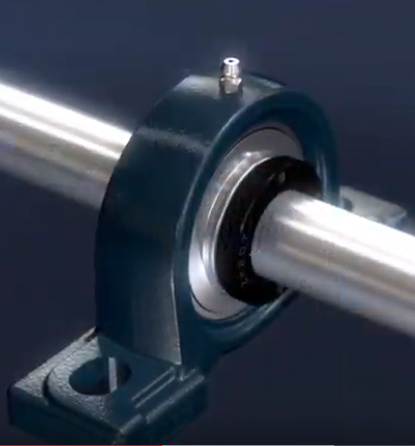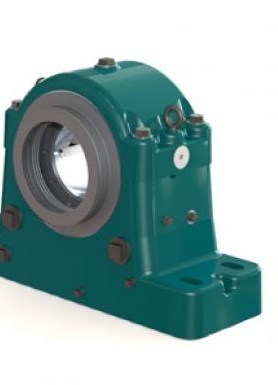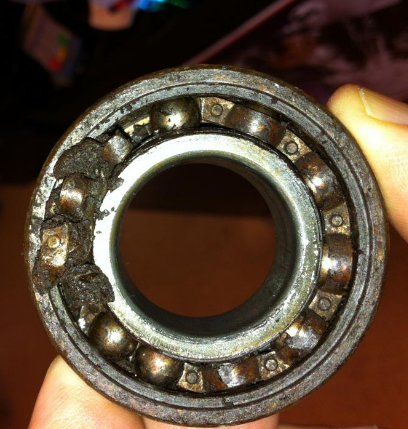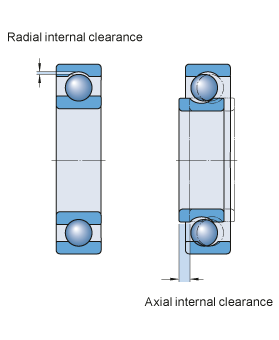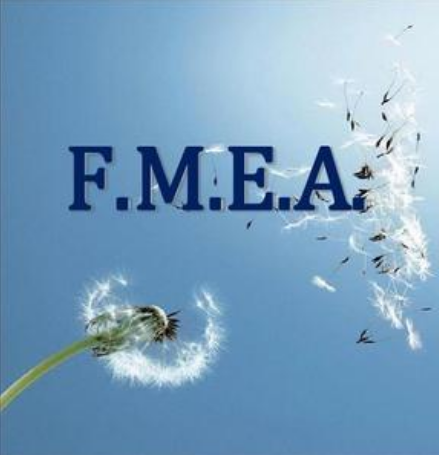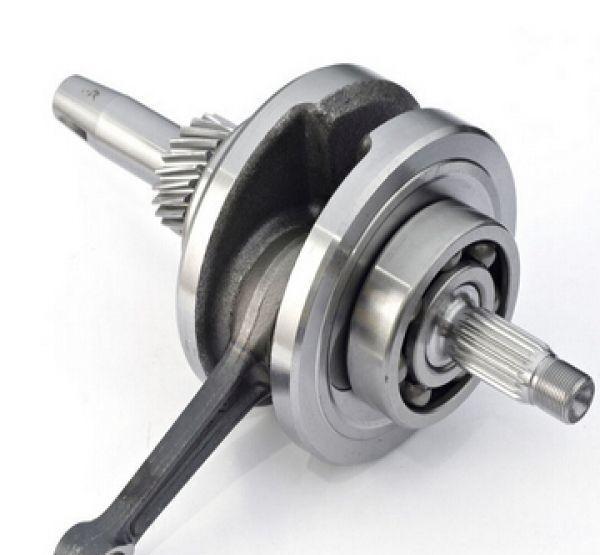For instrument bearings, certain special considerations should be emphasized: Heavy press fits should be avoided. Accuracy of mounting surfaces should be equal to accuracy of mating bearing surface. Misalignment for low torque and running accuracy should not exceed 1/4°. Loading across the bearing during assembly should be avoided. Axial positioning: Accurate axial positioning of the shaft relative to the housing requires shoulders, snap rings, or bearing flanges. Shaft and housing shoulders: Diameter of a shaft or housing shoulder must be sufficient to ensure solid seating and support for applied thrust loads, yet small enough to avoid interference with other parts of the bearing. Most manufacturers provide recommended shoulder dimensions for each bearing size. Fit accuracy between shoulder and mounting diameter should be as good as bearing accuracy. The corner between the shoulder and mounting diameter should be undercut because undercutting provides a more accurate machining of the shoulder surface. However, a radius is permissible if proper clearance is allowed. Retaining rings: Certain cautions must be observed with this method: Recommendations as to the groove dimensions should be followed. Locating grooves machined into the shaft or housing must be controlled for squareness of groove face to bearing mounting diameter. Recommended value is 0.0002-in. TIR…
Scoring and wiping are two common causes of oil-film bearing failure. Scoring is characterized by circular parallel grooves on the bearing lining surface and are heavier at the load zone. Wiping results in the displacement of babbitt from one location to another. If you see air-moving equipment, chances are oil-film bearings lie at the heart of centrifugal and axial fans. Serious damage can result to the entire unit should these bearings fail. Therefore, it’s important to identify and determine the causes of bearing failure to keep personnel and equipment safe and prevent costly repairs. Oil-film bearings can fail in several ways. These include scoring, wiping, fretting, overheating, fatigue, and corrosion. In industrial fans, the two most-common failure modes are scoring and wiping. Both failure modes can be identified as circular parallel grooves on the bearing-lining surface. Scoring is primarily caused by contamination while wiping develops from displacement of the babbitt. Scoring The severity of scoring is influenced by particles size, bearing load, shaft-surface finish, and speed. The grooves associated with scoring are on the order of 0.001 to 0.040 in. width and depth. The grooves lie primarily over the load zone of the bearing. In oil-film bearings, a converging wedge of oil…
Damaged bearings lead to downtime and lost productivity. Find out how to prevent the damage before it’s too late. The top bearing “killers,” or causes of damage and premature end of bearing life, are inadequate lubrication, contamination, overload, and improper handling and installation. They affect cylindrical, spherical, needle, tapered, and ball bearings. When they strike, they force companies to pay for repairing and replacing both the bearing and adjacent components that get damaged such as housings and shafts. Bearing killers also lower a plant’s operating efficiency, increase downtime, and, in the worst cases, injure workers. Here’s how engineers can monitor and prevent these four bearing killers. OEMs and bearing suppliers typically specify the right lubricant amount, type, grade, supply system, replenishment cycle, viscosity and additives for bearings. They can also help select lubricants for bearings based on history, loading, speeds, sealing, service conditions, and expected life. Manufacturers and distributors should also make detailed recommendations on storage, shelf life, delivery, filtration, and other precautions. And if any conditions change, even those that appear insignificant, the lubricant supplier should be consulted. Inadequate lubrication Inadequate lubrication is the major bearing killer. It can be broken down into eight basic categories: overfilling, underfilling, incorrect…
Internal Clearance Internal Radial Clearance of ball and roller bearings is an important parameter in obtaining proper machine operation, optimal bearing life, and a reasonable operating temperature. It is the total distance one bearing ring moves relative to the other radially (radial internal clearance) or axially (axial internal clearance). Categories Initial internal clearance: in the bearing prior to mounting. Mounted clearance: in the bearing after mounting but prior to operation. Operating clearance: in the bearing when it is in operation and has reached a stable temperature. Ideally, for optimum bearing life and machine reliability, bearing internal clearance is zero or slightly negative at operating conditions. Initial bearing clearance is chosen during machinery design and bearing selection to reach this goal. And the bearing manufacturer establishes it by controlling bearing internal structure–roller dimension & groove dimension of IR & OR. Current Standards GB/T4604.1-2012 [Equal ISO5753.1-2009]: Radial ball bearing–radial clearance GB/T4604.2-2013 [Equal ISO5753.2-2010]: Four-point-contact ball bearing–axial clearance GB/T25769-2010: Measuring methods for radial internal clearance GB/T28698-2012: Deep groove ball bearings for electric motors—Specifications GB/T32324-2015: Measuring methods for axial clearance of four-point-contact ball bearing
Introduction to Six Sigma In today’s information age, news spreads faster than ever. When an event happens halfway around the world it can become common knowledge within hours or even minutes. Companies must guard their reputation for producing quality products. A single, significant quality incident could result in irreparable damage to brand equity and consumers trust. While there are many quality systems in use today, one methodology has gained tremendous momentum and acceptance throughout industry. The foundational elements of this system can be traced back to the 19th century. In the 1920s, Walter Shewert, a renowned statistician, and sometimes referred to as “the father of statistical quality control”, demonstrated that when process variation reaches three sigma from the mean or average value, the process requires correction. An engineer working for Motorola named Bill Smith later coined the term Six Sigma. Bill Smith, along with Mikel Harry and Bob Galvin, the then CEO of Motorola, developed a new Quality Management System (QMS) that emphasized the relationship between product performance and the corrections required during manufacture. Their four phase system became the basis on which the current Six Sigma methodology was built. The four phases were Measure, Analyze, Improve and Control. What is Six…
Introduction to Failure Mode and Effects Analysis (FMEA) There are numerous high-profile examples of product recalls resulting from poorly designed products and/or processes. These failures are debated in the public forum with manufacturers, service providers and suppliers being depicted as incapable of providing a safe product. Failure Mode and Effects Analysis, or FMEA, is a methodology aimed at allowing organizations to anticipate failure during the design stage by identifying all of the possible failures in a design or manufacturing process. Developed in the 1950s, FMEA was one of the earliest structured reliability improvement methods. Today it is still a highly effective method of lowering the possibility of failure. What is Failure Mode and Effects Analysis (FMEA) Failure Mode and Effects Analysis (FMEA) is a structured approach to discovering potential failures that may exist within the design of a product or process. Failure modes are the ways in which a process can fail. Effects are the ways that these failures can lead to waste, defects or harmful outcomes for the customer. Failure Mode and Effects Analysis is designed to identify, prioritize and limit these failure modes. FMEA is not a substitute for good engineering. Rather, it enhances good engineering by applying…
Introduction to Problem Solving In the current world market, consumers and organizations have a vast amount of choices regarding the brand or manufacturer of products, parts and materials available to them. In order to not merely survive but thrive in this ever increasingly competitive market, an organization must provide the most value and the highest quality possible. Most organizations have effective quality systems in place. Unfortunately, we cannot always prevent or detect problems before they reach the customer. Whether your customer is a Tier 1 automotive manufacturer or the end user, problems sometimes occur. Even the companies held up as benchmarks for quality in their industry eventually encounter problems with their product or process. The most important factors at that time are how timely and effectively the problem is resolved and prevented from re-occurring. Problems happen so we must be skillful and systematic in resolving the problems as they arise. What is Problem Solving Problem Solving is the process undertaken to find solutions to complex or difficult issues by taking an analytical approach using scientific methods. Effective problem solving requires the issue to be recognized and fully understood by the problem solver(s). Then, various problem solving methods and tools can…
Introduction to Corrective Action Preventive Action (CAPA) When illness strikes and we need medical attention, we put our trust in the medical products and care givers to provide relief. We expect the care we receive is without fault. Fortunately, failure is not experienced frequently in healthcare and medical devices. When failure does occur, we demand a rigorous process of investigation be initiated to identify why it occurred. Corrective Action Preventive Action (CAPA) is a process which investigates and solves problems, identifies causes, takes corrective action and prevents recurrence of the root causes. The ultimate purpose of CAPA is to as犀利士 sure the problem can never be experienced again. CAPA can be applied in many disciplines. A few of these disciplines are: Manufacturing Product Design Testing Verification and Validation Distribution, Shipping, Transport and Packaging Use-Applications What is Corrective Action Preventive Action (CAPA) Corrective Action Preventive Action (CAPA) is the result of a US FDA requirement, FDA 21 CFR 820.100. The CAPA requirement applies to manufacturers of medical devices and compels them to include CAPA in their Quality Management System (QMS). CAPA is split between two distinct but related functions. Corrective Action (CA) is an extension of Root Cause Analysis (RCA). The first goal…
Now we have the correct equipment for the corresponding application and now comes the turn to the installation. An incorrect installation can reduce the useful life of an equipment due to premature failure caused by several defects. The effects are shown in the following graph: The most common errors in the installation of equipment that reduce the life of the bearings are: 1. Misalignment of the shaft in relation to the driving equipment. Perfectly aligned shafts avoid unnecessary loads on the bearings.It is very easy to detect alignments with vibration analysis and then confirm this cause by means of an analysis of the bearing failure.To avoid this cause of failure there is a large number of aligning instruments on the market that use lasers that are very precise and nowadays very friendly and easy to use without further training. 2. Unbalance. An unbalance also generates unnecessary loads that will cause premature bearing failures. To verify the balance, a vibration analysis must be used, which is able to detect this type of defect very precisely. 3. Mechanical looseness. This problem has increased lately because the designs are increasingly optimized by downsizing, which makes them lighter and less rigid. This defect in…
Crankshaft, an essencial mechnical part, plays a great role in engine of motorcycle.Motorcycle crankshaft is made of several seperate pieces, today we only focus on the failure analysis of needle roller bearings used in crankshaft. Cause of crankshaft damage Generally it is because the oil’s not replaced in time. There are bearings in crankshafts. The bearing will wear seriously without oil or with poor lubrictaion, a gap may occur, the crankshaft will shake, and the engine will produce abnormal noise FIVE reasons cause bearing failure in crankshaft 1. Pitting Reason: defects on metal surface, particle contamination, or lubricating oil contaminated with metal particlesAfter the bearing pitting occurs, strong vibration, noise and heat usually happen when operation 2. Fatigue peeling off It is caused by excessive impact loads, such as rough road condition or overloads After several impacts for some time, the sheet-like fatigue spalling occurs at the indentation. In that case there may follow noise, vibration and additional torque, which will seriously affect the running stability and accuracy of the bearing Influence factors: Material smelting qualityHeat treatment statusSurface processing accuracySurface residual stressLubricating oil, plastic deformation of contact surface 3. Wearing failure Extrusion of external hard particles or microscopic protrusions of the friction…
